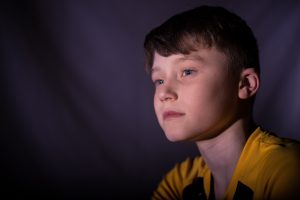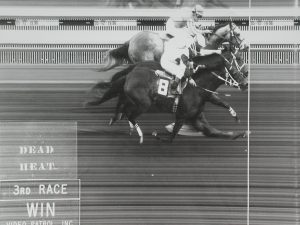
Depression in children and adolescents is a public health concern, because many young people with depression experience significant psychosocial impairment and poor long-term outcomes, such as recurring episodes of depression, greater rates of other mental health problems and suicide attempts, and poor functioning in school or in later employment (Fergusson et al, 2002). Therapy may avert these poor outcomes.
The aim of the recently published IMPACT trial was to compare the effectiveness of different types of treatment for adolescent depression, particularly in reducing depressive symptoms long-term (i.e. up to a year after treatment completion).

Depression in children and adolescents is a public health priority.
Methods
Participants in this trial were 470 adolescents, aged between 11 and 17 years, who had been referred to NHS child and adolescent mental health service (CAMHS) clinics in three regions of the UK (East Anglia, North London and North West England). The most common symptoms that these young people experienced were sleeping problems and depressed mood. More than half of all patients also had suicidal ideations. Approximately half of patients had other psychiatric problems alongside their depression, such as anxiety disorders.
All patients who met diagnostic criteria for unipolar depression were eligible to participate in the trial, unless they:
- Had a generalised learning or a pervasive developmental disorder (such as autism)
- Were pregnant
- Took medication that did not agree with antidepressants
- Experienced depression secondary to bipolar disorder, schizophrenia or eating disorders
- Had already completed one of the study’s treatments.
Patients who met the inclusion criteria were randomised to receive one of three therapies:
- Cognitive behavioural therapy: This type of therapy focuses on behaviours and thinking patterns that maintain depression and low moods. Therapist and patient identify these collaboratively and then work together to change them
- Short-term psychoanalytical therapy: This type of treatment focuses on young person’s mental models of attachment relationships. It aims to help patients understand feelings and difficulties in their lives, for example through exploration of unconscious conflicts
- A brief psychosocial intervention: This type of treatment included psycho-education about depression, as well as about action oriented, goal-focused and interpersonal activities, such as undertaking enjoyable activities and engaging with school and peers.
The types of treatment varied in the number of planned sessions: Short term psychoanalytical therapy had the most (28 sessions over 30 weeks), the psychosocial intervention had the least (12 sessions over 20 weeks) and CBT was in-between (20 sessions over 30 weeks). However, in reality, many patients completed only about half of the number of planned sessions. The duration of treatment was around 6 months.
All types of treatment included parental involvement and additional sessions for parents. In addition, some people were prescribed antidepressants over the course of the treatment; approximately one third of each treatment group.
Follow-up assessments were conducted approximately two months after patients had completed treatment, then again at around 6 months and then once more, 12 months after completion.
Results
There were two main results:
- All treatments were effective. Tracking patients’ self-reports of depressive symptoms across time showed a steady, clinically significant decrease of symptoms from when patients began therapy until the last follow-up point, at a year after completion of therapy, when they were approximately 50% of their initial level. Even after treatment had finished, symptoms continued to reduce (although these continued reductions were small). A year after completion of treatment, 77% of patients no longer met diagnostic criteria for depression.
- There was no winner among the treatments. Instead, they all performed equally well in reducing depressive symptoms.
There were a couple of interesting side findings:
- Improvements in other outcomes mirrored those in depressive symptoms. Young patients in all therapy groups experienced approximately a halving of symptoms of anxiety, obsessive-compulsive disorder and psychosocial impairment. They also saw reductions in their antisocial behaviour.
- Reassuringly, the treatments did not seem to have any significant adverse effects, such as adverse physical events including breathing problems or nausea, and incidents of self-harm or suicide attempts.

Short-term psychoanalytical psychotherapy and brief psychosocial interventions were both about as effective as CBT in this study.
Limitations
This study has several implications. First, the interpretation of findings is somewhat complicated by the fact that this study did not have a control group of people who did not undergo therapy (this would be unethical in a trial of adolescent depression). This is important particularly for depression, because it often has an episodic course, meaning that people may experience reductions in symptoms as time passes without any intervention. To somewhat make up for the lack of a control group, the authors compared their patients’ remission rates with those from control group participants in other trials. When comparing these rates, they still show that the therapies in this study were superior, but the effects were a little less impressive (i.e. approximately 1 year after therapy, 61% of patients in a control condition recovered from depression, whereas across treatments in this study, 77% did). One interesting detail is that patients also experienced reductions in symptoms of anxiety, which tend to be less episodic compared to depression. However, without a control group, the findings have to be interpreted with caution.
The type of CBT delivered in this study may have been less effective than the type of CBT used in other trials that demonstrate efficacy. Looking at the IMPACT adherence scales and the manual used for CBT, we can see that the IMPACT model was more didactic, less youth friendly, and possibly had less emphasis on shared agenda setting or therapist active listening and observation, both of which are considered to be core elements of high quality CBT.
Implications
It was somewhat unexpected that CBT did not come out as the superior therapy, because it has a strong evidence-base and has previously been shown to produce better outcomes than other therapies. It is possible that in a group of adolescent patients with quite severe symptoms (these were patients that had been referred to specialist treatment, which presumably means that they had more severe and difficult-to-treat symptoms), differences between therapies disappear.
It is interesting that all types of treatment led to improvements, despite fairly large differences in their content. As the authors discuss, this may be due to them sharing the same mechanism (e.g. perhaps it is simply beneficial for a patient if they have someone to sit with and talk to) or each therapy having its own beneficial effect. It will be interesting to see future research that examines this question further.
Finally, even though the majority of participants saw improvements in their symptoms, many adolescents’ depression (about a third) did not resolve. In addition, it is known that even young people with psychiatric symptoms below the diagnostic thresholds have poorer long-term functional outcomes compared to those without symptoms (Copeland et al, 2015). These findings remind us that more personalised work is needed to design mental health interventions that work for every young person.

This research suggests that there are a number of evidence-based therapies available, if only services had the funding and capacity to deliver them.
Links
Primary paper
Goodyer IM, Reynolds S, Barrett B, Byford S, Dubicka B, Hill J, Holland F, Kelvin R, Midgley N, Roberts C, Senior R, Target M, Widmer B, Wilkinson P, Fonagy P. (2016) Cognitive behavioural therapy and short-term psychoanalytical psychotherapy versus a brief psychosocial intervention in adolescents with unipolar major depressive disorder (IMPACT): a multicentre, pragmatic, observer-blind, randomised controlled superiority trial, The Lancet Psychiatry, Available online 1 December 2016, ISSN 2215-0366, http://dx.doi.org/10.1016/S2215-0366(16)30378-9.
[The supplementary materials (PDF) include more detailed descriptions of each therapy].
Other references
Fergusson DM, Woodward LJ. (2002) Mental health, educational, and social role outcomes of adolescents with depression. Archives of General Psychiatry, 59, 225-231.
Copeland WE, Wolke D, Shanahan L, Costello EJ. (2015) Adult functional outcomes of common childhood psychiatric problems: a prospective, longitudinal study. JAMA Psychiatry, 72, 892-899.

Thanks for the blog. As one of the authors it’s great to see the study findings disseminated and I agree with almost every comments…so I’ll tell you about the point that I think is incorrect. I wrote the CBT manual and it is not correct to say that the CBT was more didactic, less youth friendly or less collaborative. In fact the manual written for the trial heavily emphasises each of these elements and therapists were encouraged to make many adaptations to include family members, be collaborative, and increase engagement. I hope the manual and the work of the therapists who helped with the trial isa good reflection of how CBT is delivered in CAMHS. I’m happy to show specific chapters of the manual where this is really explicit and discussed in detail.
Where the confusion arises I think, in in the use of the measure to compare ‘adherence”. We had to use a measure that at least tried to characterise CBT and psychoanalytic therapy. The only measure one we could find did not characterise CBT well. – it was developed by psycho-analytic therapists and researchers who seemed to think CBT was didactic and more therapist led that in fact it is. Despite these limitations we used it to establish if there were clear differences between delivery of CBT and the psychoanalytic therapy. It did show differences – which we expected – but it does not ‘characterise the CBT we provided very well, It’s a shame that the use of this scale has been a bit misleading – happy to discuss this with others
I’d also like to draw attention to two other findings. First is the extremely high rate of sleep problems in this population (almost 90%) of participants reported these as a symptom. Second is the fact that most young people did not receive a full course of therapy. We do not know what the reasons were for this – were they just feeling better and not in need of additional sessions, or did they not find therapy appealing enough to attend most of their sessions, I think we need to develop therapies that better suit the needs and preference of young people and listen harder to what they tell us about how they want treatments to be delivered.
Thanks very much you for your comment, Shirley!